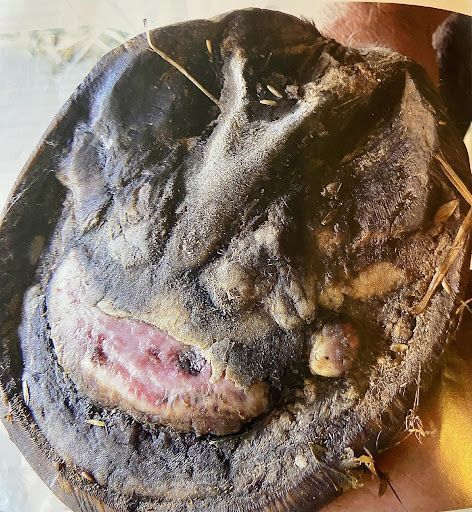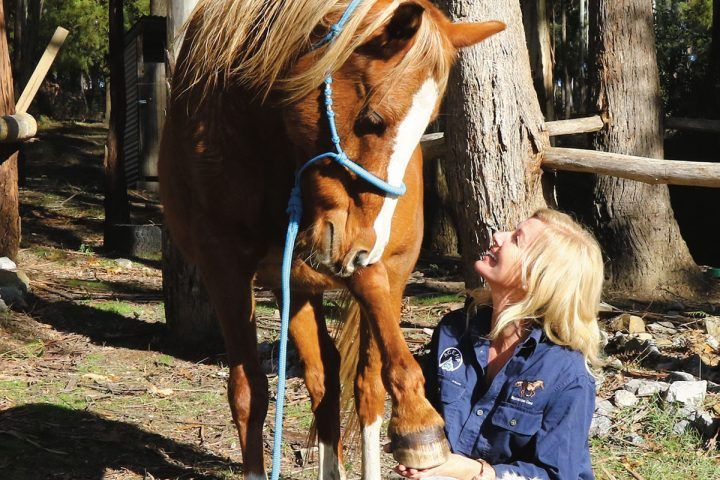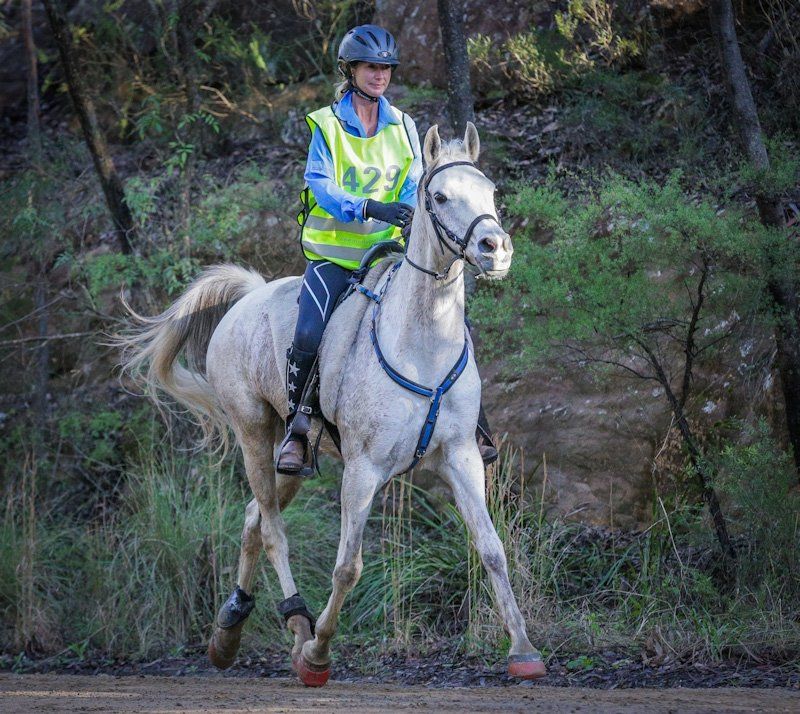TOM QUILTY GOLD CUP – 160KM ENDURANCE RIDE – 50 YEAR ANNIVERSARY EVENT
Wild About Hooves • 16 June 2015
Meet my magnificent mount, Omani City Smog who I completed the challenging 160km ride on.
The Tom Quilty Gold Cup is Australia’s equivalent to the World Cup of Endurance Riding. This 160km ride is the holy grail of endurance and to successfully complete and earn a coveted silver buckle is the goal. It's a real treasure to be awarded.
I was honoured to ride for my friend Carol Layton, a well respected equine nutritionist. Omani City Smog was my mount and I fondly called him Smokey Jo Kilometre Eater often during the epic adventure. Carol rode her favourite horse, Omani Mr Squiggle.
We were blessed to be sponsored by a hoof boot company. The horses wore the glue on shells in bright orange and they certainly attracted a lot of attention.
For a hundred million reasons, they are the way to go!.
At the starting line at midnight, mounted upon a horse that's not mine, in a different state of Oz, staring around at a crowd of over 340 excited horses, it was that moment before it all begins is when my mind is most quiet and I realize ‘Damn, I’m the luckiest person alive’.
Finishing is an amazing bonus – but sometimes it's easy to lose sight of the struggle it took to just show up. The Tom Quilty takes years of preparation and planning. As much as the start terrifies me and my nerves overwhelm me, the butterflies in my stomach turn into large birds; it’s the start line that seems to offer clarity to all the lead up turmoil.
We headed out on a beautiful starry night on a bitumen stretch of road and the noise of thousands of metal shoes drowned out the silence. So damn loud! Our booted horses make no noise. Such an amazing difference and one that offers a competitive edge in the dark of night when you want to surprise and overtake someone ahead.
Hoof Boots offer so many benefits and I’m going to highlight some of the important things that I “bang on” about as an educator in hoof care so bear with me…
A hoof fitted comfortably inside a boot made of tough, elastic materials is free to expand and contract, pump blood normally and torque side to side with each step. The hoof is meant to spread on weightbearing. It is the natural shock absorbing feature of the hoof. A shod horse on the other hand is unable to flex and thus is at a disadvantage from the impacts of concussion from a steel shoe, it has reduced circulation and loses feeling and traction. Concussion is passed off to joints and ligaments higher in the limbs and body which are not designed to dissipate shock.
Boots are cost effective – initial outlay and fitting can appear expensive but when you weigh up the lifespan of the boots compared to shoeing costs over the same time frame, boots are a cheaper alternative. Boots don’t wear like a metal shoe. If you learn to trim yourself and use boots you will save yourself a fortune. We timed ourselves to see how long it took to trim and glue on boot shells and it was 20minutes. Sensational time saving too especially if you want to horse around. Once they are glued on we don’t have to worry about them.
Hoof boots don’t compromise the horses way of going. They offered protection for the varied terrain that challenged us during the ride. Gravel roads, bitumen stretches, rocky trails, muddy tracks. 160 long kilometres (100 miles) of everything. They offer the best gripping hoof wear known to horse.
The boots offer protection from excess wear, bruising and concussion. I love that they offer ease of mind while you have your hands full with your super fit, forward moving horse. You just don’t have to worry you might lose a shoe or boot.
These boots absorb concussion, a huge benefit over a long distance, challenging ride. The following day our horses showed no signs of edema or swelling in their legs.
As I walked them around the grounds the day after the Quilty, I noticed lots of shod horses covered in “swelldown” poultice or fill in their legs. I admired our horses and sighed relief that we suffer so few problems with hoof issues. Why don’t more riders use them?
Hoof Boots have been designed with the performance horse in mind.They are lightweight and infallible. I apologise if my blurb sounds like an advertorial but I swear and declare Hoof Boots are the best on the market for endurance horses. Why would anyone use metal shoes when
HOOF BOOTS ARE THE WAY TO GO!

Laminitis kills thousands of horses every year, and leaves thousands of others debilitated with lameness. It will and can affect any horse. And for you, the horse owner it can be devastating: you feel guilty and heartbroken at your horses suffering, confused with all the information as it is typically explained by professionals in scientific terms that can be difficult to understand, costly veterinary bills and you have the major task of nursing your horse back to recovery. . Unseasonal weather patterns around Australia with abundant rain and sunshine saw laminitis at a near epidemic last year. The reason being, that the environmental conditions can trigger increases in the sugar, starch and fructan. These collectively known as non-structural carbohydrates can cause laminitis in any horse or pony. Alarm bells ring this spring!! Be warned and be prepared, for prevention is better than cure.

The extraordinary relationship between humans and the horse has been running since before the birth of Christ. Indeed, there is evidence our domestication of horses goes as far back as 3500 BC. And ever since we recognised the utilitarian value of the horse, there has been the horseshoe. The use of horseshoes has become an almost unquestioned tradition. Humans have been nailing shoes onto horses’ hooves for well over a thousand years. Who can remember back to a time otherwise?

